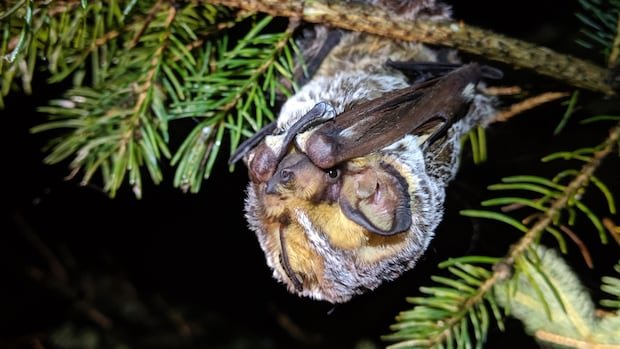In the clash between bats and wind energy lies a grim narrative of climate solutions. Bats, often associated with dark folklore, are facing a critical threat in Canada as wind turbines have been decimating their populations for years. Cori Lausen, a bat conservation director at the Wildlife Conservation Society in B.C., warns that the extinction of migratory bats is not a matter of ‘if’ but ‘when.’
The endangered hoary bat, eastern red bat, and silver-haired bat are all at risk in Canada, as per the Committee on the Status of Endangered Wildlife. A study published in Biological Conservation in 2017 projected a significant decline in hoary bat populations, potentially leading to extinction within the century.
Lausen’s awareness of the dangers posed by wind turbines to bats dates back to the early 2000s, during her research at the University of Calgary. The discovery of dead bats near wind turbines prompted investigations, revealing that bats were mostly killed by turbine blades or pressure changes near the structures.
Recognizing the importance of bats, particularly in controlling insect populations for farmers, Lausen emphasizes the need for solutions to protect these crucial species. Efforts like curtailment, which involves pausing turbine operations during bat migration periods, have shown promise in reducing bat fatalities.
Smart curtailment strategies, such as using technology to detect bat presence and shut down turbines accordingly, offer a more targeted approach to safeguarding bats. However, challenges remain in implementing these technologies across wind energy projects due to regulatory differences and outdated turbine infrastructure.
As the debate continues on balancing renewable energy goals with wildlife conservation, the urgency to preserve bat populations remains paramount. Lausen advocates for proactive measures, including avoiding wind farm construction along migratory routes, to mitigate the impact on bats and advance sustainable energy technologies.


